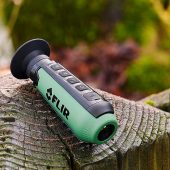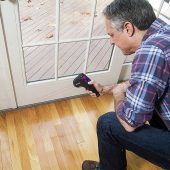Regular calibration is important in maintaining the accuracy of a temperature data logger. Like most instruments, temperature data loggers can experience a measurement drift over time, leading to inaccurate readings.
In this post, we discuss how to go about calibrating a temperature data logger.
Why Do You Need To Calibrate A Temperature Data Logger?
A majority of measurement instruments get less accurate over time. This is called measurement drift. It happens no matter how well you take care of an instrument.
This drift can be caused by a variety of factors including environmental changes, wear and tear, improper use and so on.
A temperature data logger can also become inaccurate if it’s dropped or exposed to temperatures outside the recommended range.
If you are using a temperature data logger to monitor your aquarium, wine cellar or cigar humidor, a little loss of accuracy is probably not a big deal. A measurement drift of a couple of degrees will probably not have any adverse effects.
But in industries such as food manufacturing and pharmaceuticals, even a deviation of a fraction of a degree can have serious consequences. In such cases, regularly calibrating a temperature data logger is extremely important.
That’s not to mean you should not calibrate your home temperature data logger. Over time, it can get so inaccurate that it threatens life in your aquarium or makes your wine go bad.
While you don’t need to calibrate it as often as an industrial temperature data logger, it’s important to do it at least once a year or if you suspect the instrument is not working properly.
Temperature Data Logger Calibration Procedure
When it comes to calibration, there are two categories of temperature data loggers: those that offer DIY calibration and those that require professional calibration.
DIY calibration is common in consumer grade temperature data loggers such as those used in homebrews and aquariums.
Calibration involves finding out the amount of offset between the true reading and the reading displayed by the data logger. You then adjust the data logger to correct the offset.
Check your user manual or contact the manufacturer to find the exact calibration procedure for your particular temperature data logger. The process varies based on the brand and model.
For instance, some data loggers are app-connected and you can only calibrate it via an app. With others, you have to access hidden or advanced settings on the device.
Professional Calibration
The other category of temperature data loggers are those that require professional calibration.
It’s not that these data loggers are difficult to calibrate; it’s that they are designed to have traceable calibration.
If you calibrated the data logger yourself, there’s no evidence that it’s calibrated. This can cause a lot of issues, legal and otherwise, in industrial applications.
That’s why new professional grade temperature data loggers come with a calibration certificate which is usually valid for a year.
When you want to re-calibrate the data logger, you have to send it to the manufacturer or a recognized lab for professional calibration. The data logger will then come back with a new certificate to prove that it’s working properly.
There are different ways temperature data loggers are calibrated in a lab.
For example, they can compare the readings from the data logger to the readings of a calibrated reference thermometer. If there’s a difference in the measurements, they adjust the data logger to make it accurate.
They can also use a temperature simulator calibrator. This device simulates various temperatures by adjusting voltage or resistance, to check whether the data logger is displaying the expected readings.
Another common calibration method is a dry block or dry well.
This device heats to a specific temperature (some can heat up to 300C or more). You then insert the temperature data logger (or the external probe connected to the data logger) and see if you get the same measurement.
Professionals will typically compare the readings of the dry well and the data logger at several temperature points such as 20C, 50C, 100C and 200C to make sure it is accurate across a wide range of temperatures.
Here’s a video showing a dry block temperature calibrator in use.
For added accuracy, a reference thermometer is used alongside a dry well. Dry well measurements with a temperature data logger are compared to dry well measurements with a reference thermometer.
When you reach out to a calibration service, ask what kind of temperature calibration they offer and make sure it comes with a certificate.
How Often Do You Need To Calibrate A Temperature Data Logger?
The standard recommendation is to recalibrate most measuring instruments every 6-12 months depending on how often they are used, the environment they are used in, and the kind of application they are used for.
So for example, a temperature data logger for highly sensitive applications like food processing should be calibrated more frequently than a home aquarium temperature data logger.
You should also calibrate a temperature data logger if:
- It’s new and did not come with a calibration certificate. This gives you peace of mind that you are getting accurate readings.
- If you’ve bought a second hand temperature data logger. Check its accuracy before you put it to use.
- It experiences shock from a fall, vibration or being hit by something.
- It’s exposed to extreme temperatures outside the recommended range.
- You suspect the readings are not accurate. For example, if you get unusually high or low measurements, or if the measurements fluctuate more than expected.


